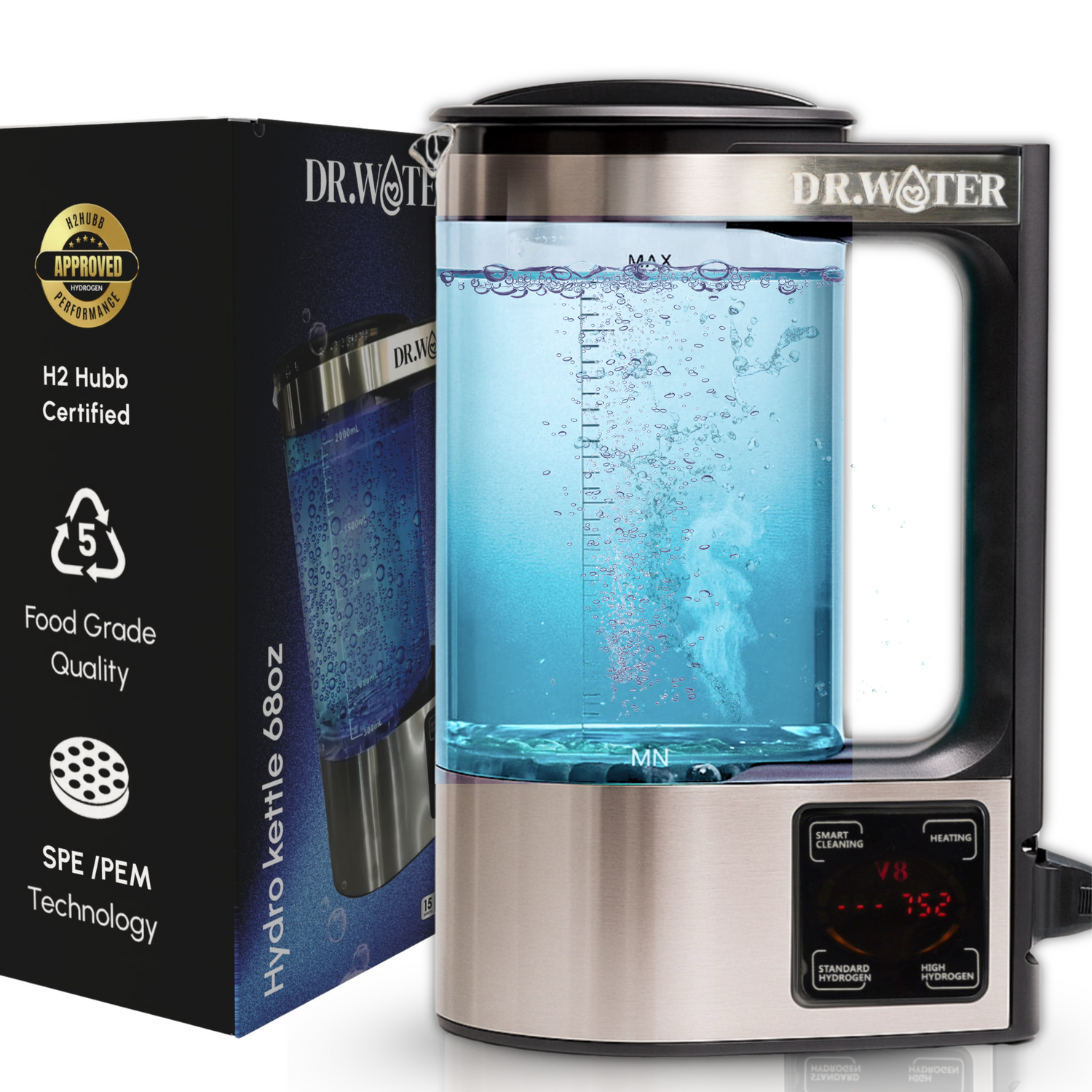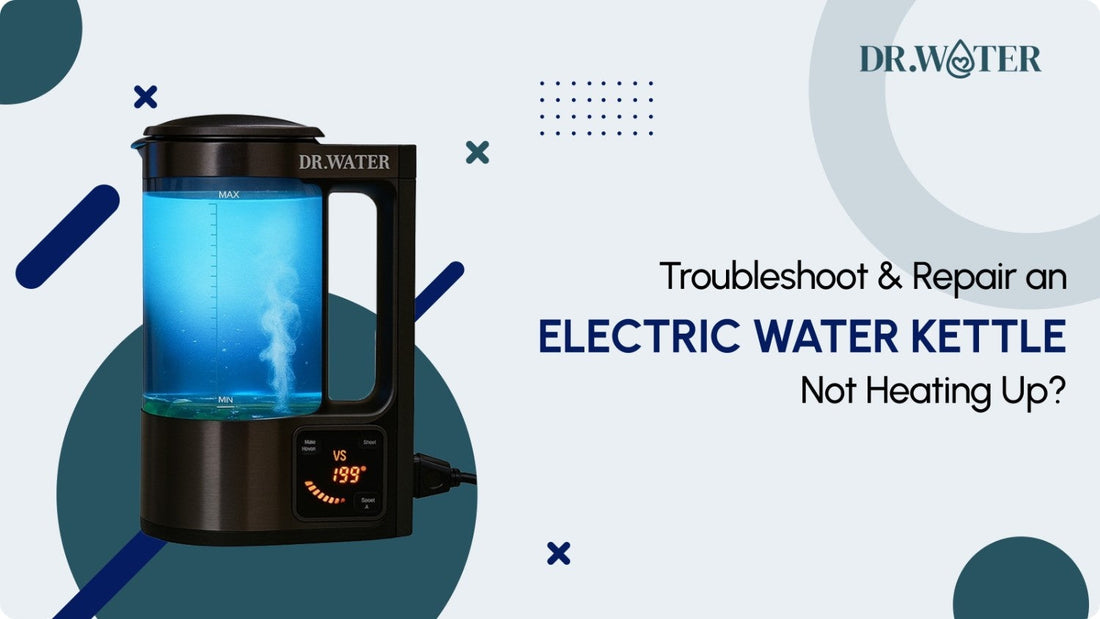
How to Troubleshoot and Repair an Electric Water Kettle Not Heating Up
Share
Summary:
|
If your hot water heater sounds like a tea kettle, it’s not just quirky background noise. It may be a sign of internal pressure, sediment buildup, or early system failure. And if your electric kettle isn’t heating at all, you’re dealing with the opposite issue.
This guide is for those who rely on heated water for skincare, appliance cleaning, or warm hydration for athletic or fitness regimen without needing it to reach a boil. We’ll walk you through why heating failures happen, what strange kettle sounds mean, and how to troubleshoot and repair your appliance the smart way.
Let’s get started with the most common heating issues.
5 Common Reasons Your Electric Kettle Won’t Heat
If your electric kettle suddenly stops heating, it’s not just inconvenient. It could be a sign of deeper mechanical or safety issues. Understanding the underlying cause helps you fix the problem faster and decide whether a repair or replacement is worth it.
1. Power Supply or Connection Failure
This is the first and easiest thing to check but often the most overlooked.
- A loose plug, faulty socket, or tripped circuit breaker can interrupt power.
- Surge protectors or power strips may also prevent full voltage delivery.
Pro Tip: Plug in another high-wattage appliance (like a toaster) to test the outlet before assuming the kettle is faulty.
Hidden Insight: Many modern kettles draw 1200–1500 watts. If your home circuit is overloaded, the breaker may trip silently.
2. Burned-Out or Compromised Heating Element
The heating coil is the engine of your kettle. If it's damaged, the water stays cold, regardless of lights or sound. Moreover, prolonged exposure to hard water minerals can insulate the element, mimicking failure symptoms.
- Damage can result from repeated corrosion or thermal fatigue.
- In some kettles, the coil is exposed at the base and visible; in others, it’s sealed under the plate.
Diagnostic Tip: If you hear a faint click but see no heating, the thermostat is working but the coil likely isn’t.
3. Internal Switch or Wiring Failure
Even if your kettle clicks, internal connections may have worn out or overheated.
- Look for signs of wear like burnt smells, melted plastic, or flickering indicator lights.
- Repeated use over years can degrade soldered joints or the switch's internal spring.
Common Clue: The kettle starts, heats for a few seconds, then shuts off prematurely.
Fact: In kettles over 2–3 years old, switch fatigue is a common point of failure, especially if used multiple times a day.
4. Limescale or Mineral Buildup
Hard water silently kills kettles by coating the heating element with insulating mineral deposits.
- White chalky residue at the base? That's calcium carbonate buildup.
- Scale can also confuse the auto shut-off sensor into thinking the water is already heating.
Maintenance Tip: Descale monthly with vinegar or citric acid in hard water regions.
5. Triggered Safety Shut-Off or Sensor Fault
Today’s kettles use multiple thermal sensors to prevent overheating, or electrical hazards but they’re not immune to error.
- If your kettle refuses to turn on even when water is inside, a sensor may be stuck or misfiring.
- Dry-heat protection engages when the base sensor doesn’t detect water weight or contact.
Tip: Let the kettle cool completely and try again after 10 minutes. Some systems auto-reset through this.
Watch Out: A faulty sensor can render an otherwise functional kettle inoperable and is rarely worth replacing unless under warranty.
Understanding these causes will guide your troubleshooting and help you determine whether a simple fix or a replacement is the best solution. Next, let’s go step-by-step through how to diagnose and possibly repair the issue.
Step-by-Step Fix: How to Troubleshoot an Electric Kettle That Won’t Heat
Before tossing your electric kettle, use this step-by-step guide to identify and resolve the issue. Most problems are simple to fix at home.
Step 1: Check the Power Outlet and Cord
A faulty outlet or damaged cord is a common issue preventing your kettle from receiving power and turning on. To rule this out follow the given steps:
- Plug another device into the outlet to confirm it’s working.
- Ensure the kettle plug is fully inserted.
- Examine the cord for frays, burn marks, or loose connections.
- Avoid using extension cords or multi-plug adapters.
Step 2: Test the Kettle Base and Contacts
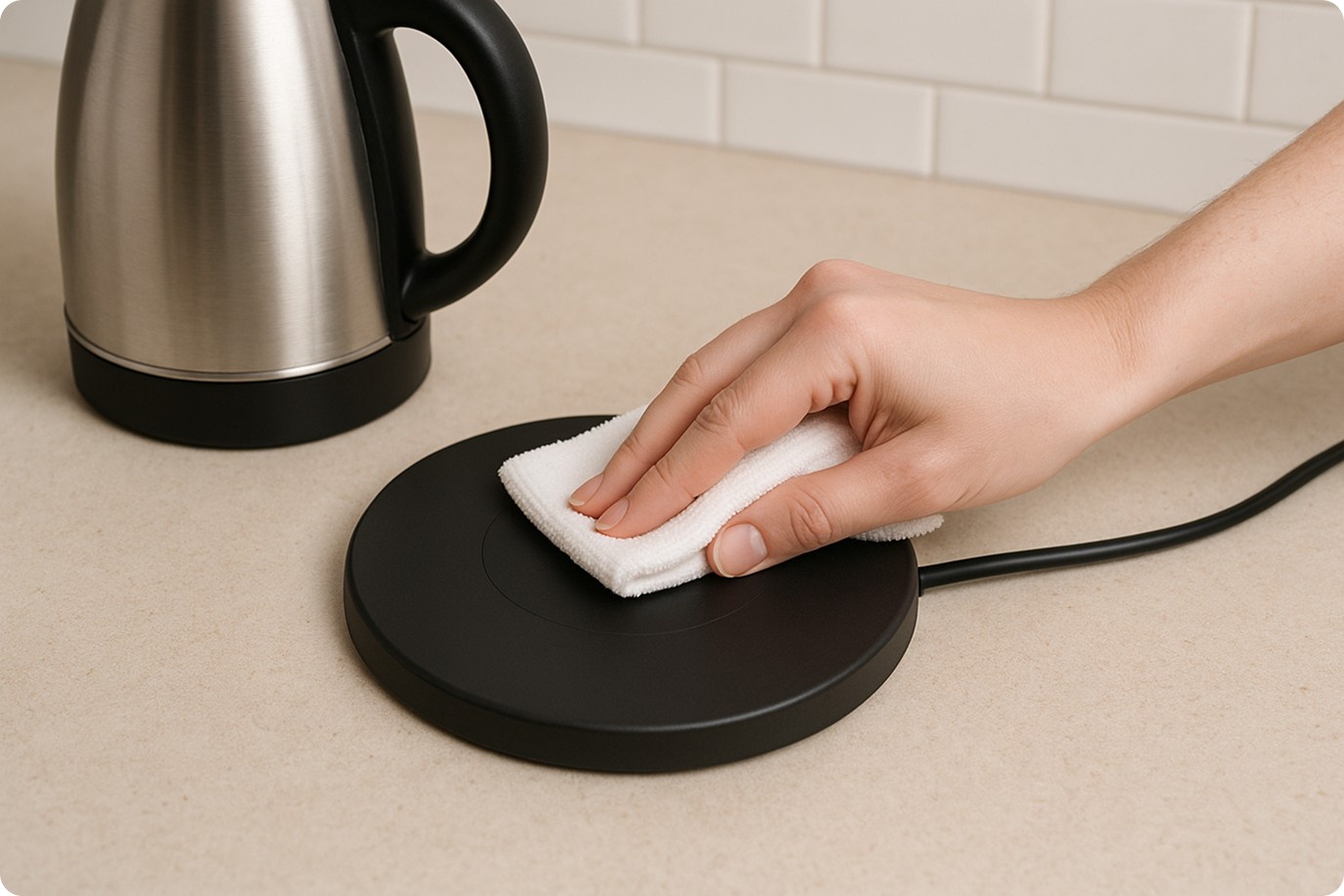
Dirty or corroded contacts between the kettle and base can interrupt power flow, stopping the heating function entirely. To check this issue, follow the given steps:
- Remove the kettle and wipe the contact points clean.
- Check for moisture, grease, or mineral residue.
- Make sure the kettle sits flush and firmly connects to the base.
- Inspect the base plug and socket for cracks.
Step 3: Inspect the Heating Element (If Accessible)
If the internal heating element is corroded or burned, the kettle won’t generate heat, even if lights turn on. To figure out this issue, follow the given steps:
- Remove the base panel (if your model allows).
- Look for rust, burn marks, or broken coils.
- Do not attempt repair unless you’re confident and seek expert help.
- Replacement often makes more sense for budget models.
Step 4: Check for Limescale or Mineral Deposits
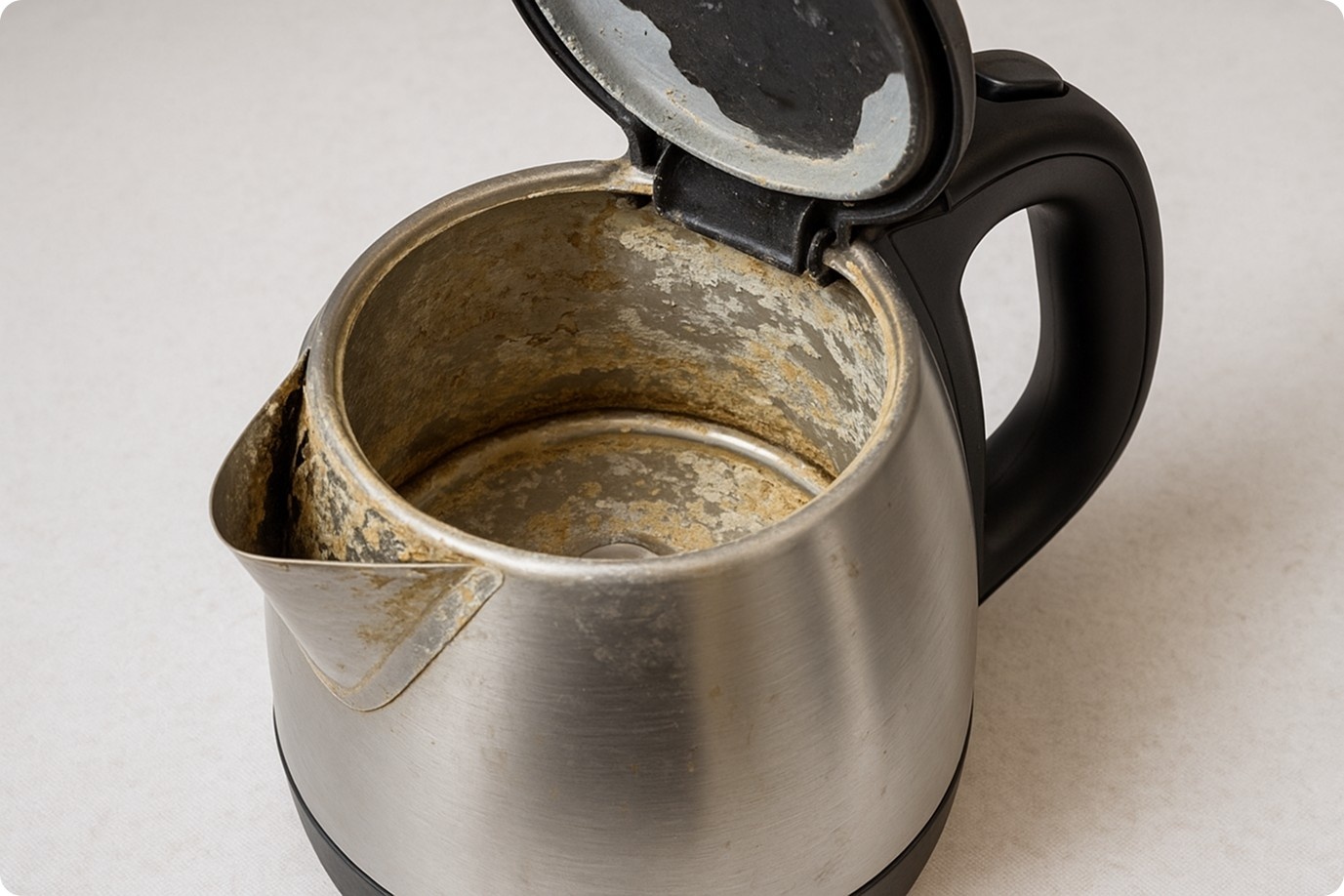
Limescale buildup can insulate the heating plate and block heat transfer, causing weak heating or premature shut-off. You can follow the given steps to check for deposits:
- Fill the kettle with a 1:1 vinegar and water solution.
- Let sit for 15–30 minutes, then rinse thoroughly.
- Descale every 1–3 months in hard water areas.
Step 5: Test the Lid and Auto Shut-Off Mechanism
Loose lids or broken switches can prevent the kettle from heating by failing to engage the built-in safety mechanism. Here are a few steps to test the lid and auto shut-off:
- Ensure the lid clicks shut completely.
- Confirm the kettle clicks when seated on the base.
- A light tap on the lid may engage the safety switch.
- If still unresponsive, the internal sensor may be misaligned.
These steps often help resolve common heating issues. If the kettle still doesn’t work after this checklist, it may be time to consider repair or replacement, which we’ll cover next.
Also Read: Electric vs. Stove Top Kettle: Which One Boils Water Faster and Smarter?
When to Repair or Replace the Kettle?
While some electric kettle issues are easy to fix, others are clear signs that it’s time to move on. Here’s how to know:
|
Situation |
What It Means |
Recommended Action |
|
No Power After Troubleshooting |
Kettle won’t turn on, has visible damage, or fails despite a working outlet and base. |
Likely internal failure, consider replacing. |
|
Burnt Smell or Melting Signs |
Burnt odor, melted plastic, or frequent premature shut-offs. |
Stop using immediately and replace for safety. |
|
Still Under Warranty |
Most kettles come with 1-2 years of warranty coverage. |
Contact the manufacturer for service or a free replacement. |
|
Repair Cost Exceeds Value |
Basic models aren’t worth repairing due to low replacement cost. |
Replace with a new, efficient model. |
|
Internal Component Failure (e.g., thermostat, wiring) |
These are hard to diagnose or fix without tools or training. |
Replacement is typically safer and more cost-effective. |
Ultimately, safety and reliability come first. If your kettle shows signs of serious wear or internal failure, replacement is often the safest and most cost-effective solution.
Preventive Tips for Kettle Maintenance
To keep your electric kettle working efficiently and extend its lifespan, follow these easy maintenance practices:
- Regular Descaling (Especially in Hard Water Areas): Clean your kettle every 1–3 months using a vinegar-water solution or descaling tablets. This will dissolve mineral deposits before they become a problem.
- Don’t Overfill Beyond the Max Line: Overfilling can cause water to spill into the base or electrical components. This can increase the risk of short circuits or premature wear. Stick to the maximum fill line marked inside the kettle.
- Avoid Running Kettle Empty): Always make sure there’s water inside before switching it on. Running the kettle dry can activate safety shut-offs or even damage the heating element permanently.
- Store on a Dry Surface Away from Spills: Keep the kettle and its base on a clean, dry countertop. Moisture around the base or cord can affect electrical contacts and lead to malfunction or corrosion over time.
- Unplug When Not in Use: Disconnect the kettle from the power source after each use. This not only saves energy but also protects the appliance from accidental power surges and reduces wear on internal electrical components.
By following these simple tips, you’ll reduce the chances of failure and enjoy faster, quieter, and more reliable heating every day.
Also Read: Is Kettle Water Safe to Drink? Here's What You Should Know
Try Dr. Water Hydrogen Water Pitcher & Get Rid of Unwanted Issues
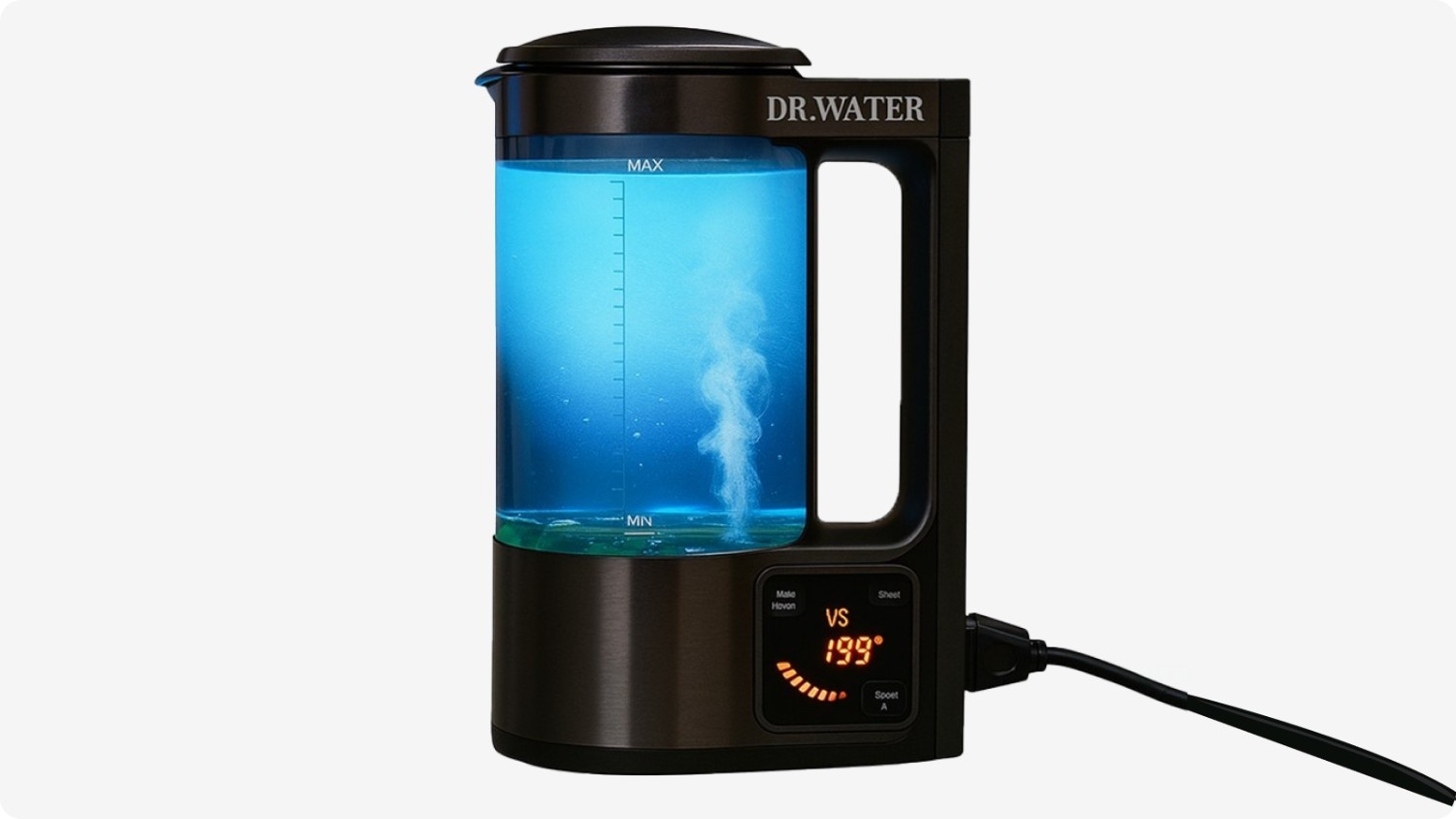
If your kettle frequently suffers from premature shut-offs, strange noises, or visible limescale buildup, the problem often starts long before the boil in your tap water.
Most tap water contains dissolved minerals like calcium, magnesium, and iron, which solidify during heating. Over time, this mineral layer:
- Insulates the heating coil, slowing down heat transfer
- Triggers false shut-offs, as sensors mistake scale for overheating
- Reduces kettle lifespan, by causing electrical fatigue and corrosion
In such a scenario, Dr. Water Hydrogen Water Pitcher comes to the rescue. It is not a basic filter but an advanced, multi-stage water conditioning system that enhances hydration and extends the performance of appliances like kettles.
Here's how it works:
- Advanced Filtration Removes Scaling Minerals
- Molecular Hydrogen Enhances Water Structure
- Improves Thermal Efficiency
- Chemical-Free, Sustainable Solution
Unlike bottled descalers or chemical tablets, the Dr. Water pitcher naturally maintains water quality without additives. It's a zero-waste, electricity-efficient device designed for daily use in homes where water quality and appliance care both matter.
Explore more Dr. Water Hydrogen Products.
Final Thoughts
A non-heating electric kettle is frustrating, but the cause is often something simple, like a faulty plug, mineral buildup, or a burned-out heating element. By identifying the issue early and following basic maintenance routines, you can often restore full function without needing a replacement.
Proactive care, like regular descaling and avoiding dry boils, goes a long way in preserving your kettle’s performance and lifespan.
Need help improving water quality to protect your appliances? Explore Dr. Water’s hydrogen water solutions for cleaner, kettle-friendly hydration that helps reduce mineral buildup and extends the life of your electric appliances.
Frequently Asked Questions
1. Why does my electric kettle stop working even though the power light turns on?
This usually points to a faulty heating element or a broken internal switch. The power circuit may be partially functional, but water won’t heat if the element is damaged.
2. What’s the difference between a kettle not heating and a hot water heater sounding like a tea kettle?
A hot water heater that sounds like a tea kettle often has sediment buildup causing steam whistles, while a silent electric kettle typically suffers from power or internal failure.
3. Can limescale really stop a kettle from heating water?
Yes. Limescale acts as insulation on the heating element, reducing heat transfer. Over time, this may trigger auto shut-off or prevent heating entirely.
4. How do I know if the kettle’s base or contact points are faulty?
If your kettle doesn’t activate or feels loose on the base, inspect the contact pins for corrosion or misalignment. Clean both the kettle and base with a dry cloth.
5. Is it safe to open and repair an electric kettle myself?
Only if the kettle is out of warranty and you’re familiar with basic electrical safety. Otherwise, tampering can void warranty or create shock risks.
